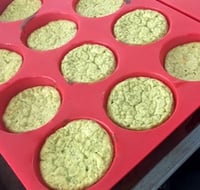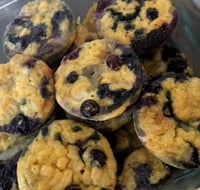Get schooled on processed foods from Kristin Sears as she shares what to to know about nutritional labels, ingredient lists and net carbs. Plus, enjoy two new Zone-approved egg muffin recipes that are perfect for school or work: Orzo Egg Muffins with Broccoli and Fruity Orzo Egg Muffins.
Lately I’m a little dismayed by an aspect of my son Lukas’ daycare. It's not because of the environment (it’s wonderful), or his reactions (he loves it), but because of a topic near and dear to my heart—nutrition.
Although I pack nutritious food for my son every day, he sees what his friends are eating and wants it for himself. And this is after he’s eaten his food already. That boy can eat! It’s also frustrating that the school passes out Cheerios in the morning while the kids play. What’s even more disheartening is when I bring up nutrition as an issue for me with the teachers, there is confusion as to why foods like cereal and crackers are problematic.
The Low-down on Processed Snacks
The carbohydrates (both refined and whole-grain) used to make cereal and crackers enter the blood rapidly as glucose. This causes a rapid increase in insulin levels that quickly drives down blood sugar levels. The result is hunger and low mental focus within a few hours after eating them. Your body then craves another high-carb snack, creating a vicious overeating cycle. Not to mention, this over-consumption can also increase the risk of type 2 diabetes, heart disease and cancer over the long-term.
What to Look for in Processed Foods
If you are still adamant about purchasing foods like cereal and crackers for you or your children for reasons of convenience, (and I totally understand), here are a few considerations:
- Look at the ingredient list – If the top ingredients are enriched flour and sugar, back away slowly. Look for a short ingredients list, the shorter the better. See 4 Things to Look for on Nutrition Labels for more information on this.
- Familiarize yourself with net carbs – Look at the total carbohydrates minus the fiber to get the net carbs that will affect insulin. If net carbs are more than 50% greater than the protein content, you're basically feeding your child the equivalent of a candy bar, and can expect reactions from your child as if you were feeding them sugar.
- Beware of nutrition labels – The carbs in crackers are not listed as sugar, but are more dangerous in many respects. Food companies know every trick in the book to tell the parent what that want to hear regarding food contents, and not what it is actually going into the child. See 24 Words on Food Labels that Really Mean Sugar is Added.
Opting to Take the Nutritional Road Less Traveled
Making foods that ensure the best nutrition for you and your family is time-consuming. But the payoff is really worth the effort.
As I mentioned in one of my previous articles, How to Start Your Baby on Solids In The Zone, for a child under three years old, the gut is not fully formed, so what they eat now will determine the final composition of the microbes in their gut and protect them from allergies and chronic diseases down the road.
For children older than three, they can start improving their health by correcting the shoddy formation of their gut caused by processed food choices. It just takes more time and effort.
To help with the time-suck of making food at home, I discovered some amazingly tasty muffin recipes. They are both easy to make and Zone-friendly. When I send these muffins with Lukas to daycare, he thinks he’s eating something naughty when in fact it’s completely healthy. For me, to mindlessly munch on a few of these muffins makes me fuller and more focused faster. And they taste great hot or cold so they can be thrown into your bag or briefcase for a quick and wonderful work-time snack.
Recipe #1: Orzo Egg Muffins with Broccoli
|
Get ingredients and cooking directions for Orzo Egg Muffins with Broccoli.
|
Recipe #2: Fruity Orzo Egg Muffins
|
Get ingredients and cooking directions for Fruity Orzo Egg Muffins.
|
To maintain nutrition with homemade foods, the key is to visualize what healthy options you want to eat on a daily basis, then finding the easiest way for you to remain consistent. Remember, the word diet comes from the ancient Greek language meaning “way of living,” so it must be kept up for a lifetime. Happy Eating!








Let Us Know What You Thought about this Post.
Put your Comment Below.